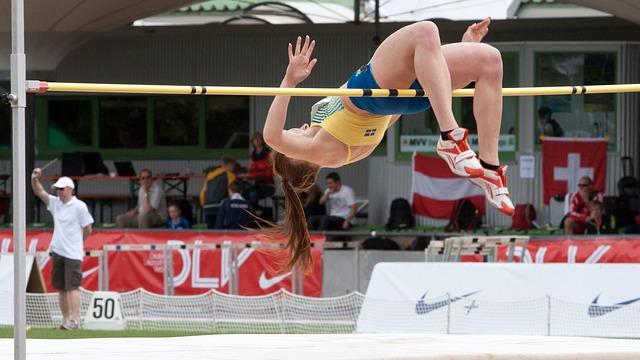The high jump continues to captivate athletics enthusiasts worldwide, showcasing a blend of raw power, agility, and technique. As one of track and field’s most iconic vertical jumps, it challenges athletes to defy gravity and push the limits of human performance. On worldathletics.org, fans and professionals alike can access comprehensive updates, records, and insights on high jump competitions, highlighting the sport’s evolving landscape and the athletes who shape its future.
High Jump Techniques Redefined Insights from World Athletics Experts
World Athletics specialists have revolutionized the science behind the high jump, emphasizing the fusion of biomechanics, speed, and precision timing. Today’s elite jumpers focus on optimizing the approach run, where acceleration patterns are tailored to generate maximum vertical lift. Expert analyses suggest that fine-tuning the last three strides-characterized by a controlled deceleration phase-significantly enhances the takeoff position, allowing athletes to convert horizontal momentum into upward force more efficiently.
Key techniques now promoted include:
- Curved Approach: Enables an inward lean that creates rotational momentum crucial for clearing the bar.
- Effective Knee Drive: Maximizes vertical thrust and improves bar clearance height.
- Flop Positioning: Perfecting body arch over the bar reduces contact and improves clearance success rates.
| Technique Aspect | Focus Point | Benefits |
|---|---|---|
| Approach Run | Speed & Curve | Optimal momentum conversion |
| Takeoff | Knee Drive | Height maximization |
| Flight | Body Arch | Reduced bar contact |
Training Regimens Shaping Elite High Jumpers Recommendations for Aspiring Athletes
Elite high jumpers follow meticulously crafted training regimens that blend technical precision with physical conditioning. Central to their routines is a focus on explosive power through plyometric drills, strength training targeting the lower body, and sprint work to optimize the approach run. Equally critical is the emphasis on flexibility and mobility exercises that ensure optimal range of motion during the takeoff and bar clearance phases. These elements are systematically interwoven to maximize vertical lift while minimizing injury risks.
For aspiring athletes aiming to reach elite levels, it’s essential to adopt a multifaceted approach:
- Consistent Technical Analysis: Regular video feedback sessions to refine form and technique.
- Periodized Workouts: Balancing heavy load and recovery phases to peak at major competitions.
- Mental Conditioning: Visualization and stress management techniques to boost confidence under pressure.
- Nutrition & Recovery: Tailored diets and sleep strategies that support intense training demands.
| Training Component | Weekly Frequency | Objective |
|---|---|---|
| Plyometric Drills | 3-4 sessions | Enhance explosive power |
| Strength Training | 2-3 sessions | Build muscle resilience |
| Technical Sessions | 4-5 sessions | Perfect approach and takeoff |
| Mental Training | 2 sessions | Improve focus and composure |
Injury Prevention and Recovery Strategies Emphasizing Longevity in High Jump Careers
Maintaining peak physical condition over the long term is crucial for high jumpers aiming to extend their competitive careers. Emphasizing a holistic approach to injury prevention, athletes and coaches focus on dynamic warm-ups, tailored strength training, and biomechanical analysis to identify and correct movement inefficiencies before they lead to strain. Core stability exercises and flexibility routines targeting the hips, ankles, and knees are integral in reducing the risk of common injuries such as tendinitis, muscle strains, and joint sprains. Additionally, modern wearable technology allows for real-time monitoring of force impacts and fatigue levels, enabling personalized adjustments to training volume and intensity.
When injuries do occur, rapid and tailored recovery strategies can make the difference between a minor setback and career-threatening damage. Incorporating physiotherapy protocols with modalities like cryotherapy, therapeutic ultrasound, and proprioceptive training aids in accelerating tissue repair and restoring neuromuscular coordination. Nutrition and adequate sleep are equally pivotal in optimizing recovery timelines. The following table highlights key elements involved in prolonging high jump career longevity through injury management:
| Strategy | Focus Area | Benefit |
|---|---|---|
| Periodized Training | Workload modulation | Prevents overuse injuries |
| Functional Movement Screening | Movement deficiencies | Reduces compensatory stress |
| Cross-Training | Cardiovascular and muscular balance | Enhances overall resilience |
| Active Recovery | Blood flow stimulation | Speeds tissue healing |
| Psychological Support | Stress management | Promotes adherence and mental well-being |
The Conclusion
As the high jump continues to captivate audiences around the globe, worldathletics.org remains a vital resource for enthusiasts and professionals alike, offering comprehensive coverage, athlete profiles, and the latest updates from the event’s dynamic world. With techniques evolving and records being challenged, the high jump stands as a testament to human athleticism and determination, promising thrilling moments in every competition to come.

